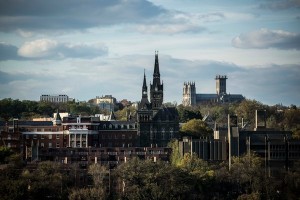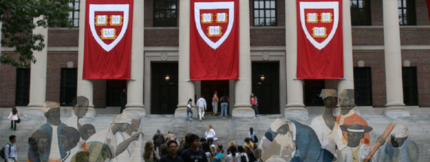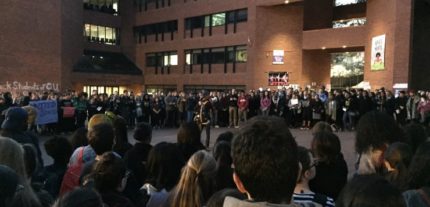
Georgetown University in Washington. Photo by Garbriella Demczuk for the New York Times
Georgetown is yet another university that has had to come to terms with its dark past.
During a financial crisis that threatened the existence of the university in 1838, Georgetown opted to sell 272 of its enslaved Africans to satisfy its debt. Two of the institution’s presidents negotiated the purchase, which earned the school roughly $3.3 million in today’s dollars.
The mass of enslaved Africans, which included men, pregnant women, and children as young as 2 months old, were shipped from their home plantation in Maryland to Louisiana. Working conditions in the Deep South were known to be much worse than in the North.
Historians told The New York Times, who originally reported the story, that the university relied heavily on profits from Jesuit plantations in Maryland in order to fund the institution. Those in bondage were also often donated to the school by affluent parishioners.
After student protests on campus, Georgetown agreed to remove the names of the presidents involved in the sale, the Rev. Thomas F. Mulledy and the Rev. William McSherry, from school buildings. However, many are still not satisfied and are demanding more action from the university.
The institution is now in the process of locating the descendants of the enslaved Africans who were sold. It’s also considering offering apologies and even financial restitution to however many descendants the search team is able to find.
Researchers were able to locate a Black man named Cornelius “Neely” Hawkins who was just 13 years old when he was sold by the Jesuits. An 1870 census showed him as a husband, father and free man. This revelation also led to a descendant of Hawkins’ by the name of Maxine Crump, 69, who was Baton Rouge’s first African-American female TV news anchor. She became angry when she learned Georgetown was able to profit from the sale of her ancestors.
“Oh my God,” she said. “Oh my God.”
Crump says she would like to see Georgetown award scholarships to descendants of former enslaved Africans, rather than just offer “casual institutional apologies.”
Crump also found joy in learning who her ancestors were, where they were, and how they made it through.
“Now they are real to me,” she told The New York Times. “More real everyday.”
This discovery adds to the slew of prominent universities that have had to acknowledge their institution’s ties to slavery. Clemson University recently dedicated a number of markers to commemorate the work of former enslaved Africans and Native Americans on the development of the campus, while Harvard University chose to replace its shield, as it displayed the crest of the slave-owning family that provided funds to the law school.
“This is not a disembodied group of people, who are nameless and faceless,” alumnus Richard J. Cellini told The New York Times.
Cellini is the founder of the non-profit organization The Georgetown Memory Project. He employed his own team of genealogists to help piece together the details of what happened to those 272 slaves.
“These are real people with real names and real descendants,” he said.

